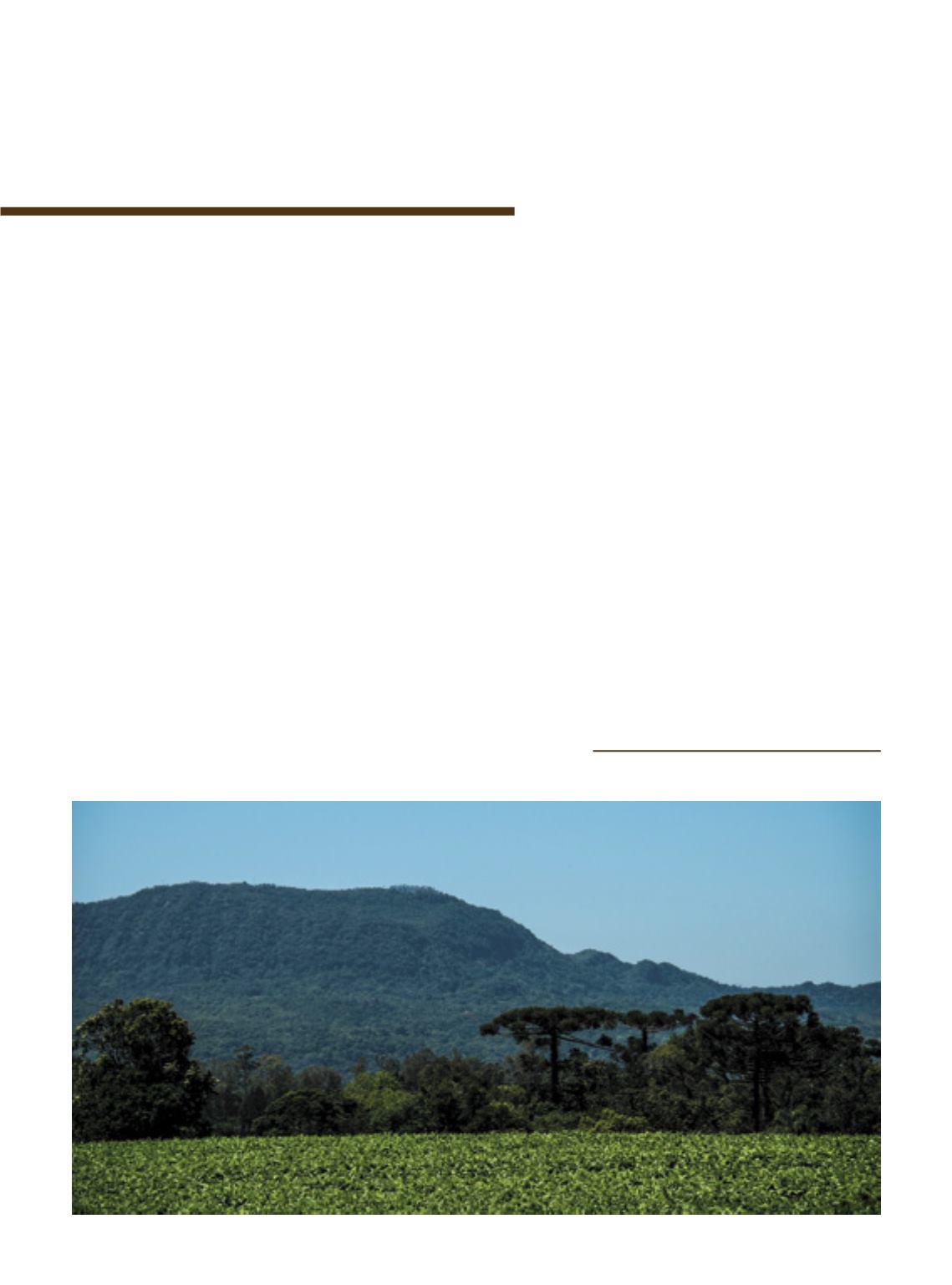
The tobacco sector has for years advocated the need to turn tobacco farming as
sustainable as possible. Representatives and people involved with the crop stress
that the sustainabilityof thebusiness depends onenvironmental preservationand
social responsibility. “The concern with the environment has been evolving since
the late 1970s”, recalls Iro Schünke, president of the Interstate Tobacco Industry
Union (SindiTabaco), which completes 70 years in operation in 2017.
Schünke mentions that since that time the integrated tobacco growers have
been advised on the need to reforest idle areas for their wood fuel needs (with em-
phasis on eucalyptus) of their curing barns at tobacco drying. The cultivation of
trees towards this purpose and other needs on the farm has contributed towards
the preservation of native forests, thus diminishing the production cost and gener-
ating income. A total number of 150 farmers grow tobacco on an area of 299 thou-
sand hectares in South Brazil, where the crop is cultivated for its most part.
According to Schünke, compared to the other crops, tobacco is responsible for
one of the highest forest cover rates. On average, 27%of the total area of the small-
scale tobacco farmers is covered with forests. “The countless conservation-ori-
ented practices, along with the legal obligations are spread amongst the farmers
through the companies’ field staffs and seminars promoted in the communities on
a yearly basis “, he observes.
Another step forward referred to by SindiTabaco and associate companies that
ended up generating significant environmental, qualitative and economic gains is
Anexample to be
followed
Sustainable production resulted into a reductionof 83.3%
of the amount of pesticides applied on tobacco over the
past two decades
the use of styrofoam trays (float system) for the
production of tobacco seedlings. The beginning
of this technology goes back to the 1990s and con-
solidated in record time. The use methyl bromide
for sterilizing the seedbedswas eradicated in2006.
This change reduced considerably the application
of pesticides in theproductionof seedlings.
What also diminishedwas the amount of pes-
ticides appliedon the tobacco fields. According to
SindiTabaco, the reduction in thevolumeof pesti-
cides reached 83.3%over the past decades. Now-
adays, just 1.1 kilogram of pesticide is used per
hectare, meaning that tobacco, among the com-
mercial crops, uses the smallest amount of pes-
ticides. “The credit of this result goes to research
anddevelopmentworks carriedout by the indus-
tries of the sector, and to the creation of aware-
ness among the farmers”, Schünke explains.
Furthermore, through the Integrated Tobacco
ProductionSystem(ITPS), the farmers undertake
to utilize only registered products and authorized
by theMinistry of Agriculture, Livestock and Food
Supply (Mapa). They are equally advised to apply
only the amount recommended for the crop.
A program that contributes towards the re-
duction in the use of pesticides is the so-called
Integrated Pest Management (IPM), which deter-
mines the occurrence of pest outbreaks and the
preservation of their natural enemies, thus pro-
moting biological control.
Forest cover
reaches27%, onaverage
Inor Ag. Assmann
99


